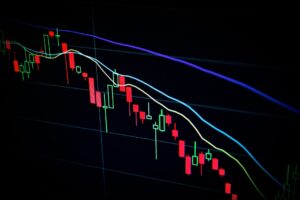The Dynamics of Supply and Demand in the Cryptocurrency Market

The Dynamics of Supply and Demand in the Cryptocurrency Market
The cryptocurrency market, with its unique characteristics and rapid growth, has become a focal point for investors, traders, and economists alike. At the heart of this market lies the interplay between supply and demand, which drives price fluctuations, shapes market trends, and impacts the overall cryptocurrency ecosystem.
Understanding the dynamics of supply and demand in the cryptocurrency market is essential for anyone looking to participate, invest, or simply gain insights into this fascinating financial landscape. This article explores the key factors influencing supply and demand in the cryptocurrency market and examines how these dynamics shape the behavior, value, and potential of various digital assets.
Supply Dynamics in the Cryptocurrency Market
Supply dynamics in the cryptocurrency market are influenced by a unique set of factors that set it apart from traditional financial markets. Here’s an overview of some of the key aspects:
1. Total Supply: Many cryptocurrencies have a fixed or capped total supply, such as Bitcoin’s 21 million limit. This scarcity can create a perception of value, similar to precious metals like gold.
2. Mining and Creation Rate: The rate at which new tokens are created or mined affects the supply. For instance, the mining difficulty and rewards can change over time, influencing the number of new coins entering the market.
3. Token Distribution: How tokens are distributed among founders, investors, miners, and the community can impact market dynamics. Uneven distribution may lead to concentrated ownership, affecting liquidity and price stability.
4. Loss and Burn Mechanisms: Lost private keys or intentional burning of tokens (removing them from circulation) can reduce the effective supply, creating scarcity and potentially influencing price.
5. Regulatory Factors: Government regulations, such as bans or restrictions on trading, mining, or holding cryptocurrencies, can impact supply by limiting access or creating barriers to entry.
Demand Dynamics in the Cryptocurrency Market
The demand side of the cryptocurrency market is equally complex and influenced by various factors, including:
1. Utility and Use Cases: The demand for a particular cryptocurrency often depends on its utility and the problems it aims to solve. Whether used for payments, smart contracts, or decentralized applications, the real-world applicability drives demand.
2. Speculation and Investment: Many participants are attracted to cryptocurrencies for speculative trading or investment purposes, often driven by potential high returns. This speculative demand can lead to significant price volatility.
3. Market Sentiment and Perception: Public perception, media coverage, and overall market sentiment can fuel demand. Positive news can lead to buying frenzies, while negative news can prompt sell-offs.
4. Accessibility and Adoption: The ease of acquiring, using, and trading a cryptocurrency affects its demand. Wider adoption by merchants, integration with traditional finance, and user-friendly interfaces can boost demand.
5. Economic Factors: Macro-economic conditions, such as inflation rates, monetary policies, and economic stability, can influence the demand for cryptocurrencies as alternative investment options or stores of value.
Interplay Between Supply and Demand: Shaping the Cryptocurrency Landscape

The interplay between supply and demand in the cryptocurrency market is a delicate and ever-changing dance that shapes prices, liquidity, volatility, and market behavior. Here’s how these dynamics intertwine:
1. Price Discovery: The interaction between supply and demand determines the market price of a cryptocurrency. If demand exceeds supply, prices may rise, and vice versa.
2. Market Liquidity: The availability of willing buyers and sellers affects market liquidity. Limited supply or reduced demand can lead to illiquidity, impacting the ability to execute large trades without significant price impact.
3. Volatility: The cryptocurrency market is known for its high volatility, partly driven by sudden changes in supply and demand due to news, events, or market sentiment.
4. Long-Term Trends: Over time, the underlying fundamentals, utility, technological advancements, and macro-economic factors shape the long-term demand and supply trends, influencing the growth trajectory of specific cryptocurrencies.
Supply and Demand in Crypto
The dynamics of supply and demand in the cryptocurrency market are multifaceted and influenced by a complex interplay of factors. From technological innovations and regulatory landscapes to market psychology and economic conditions, these dynamics are constantly evolving and shaping the market in unique ways.
Understanding these dynamics is essential for traders, investors, regulators, and enthusiasts to navigate the intricate cryptocurrency landscape. It provides insights into price behavior, market trends, investment opportunities, and potential risks. As the cryptocurrency market continues to mature and integrate with the broader financial ecosystem, the study of supply and demand dynamics will remain a vital aspect of unlocking the full potential and value of this groundbreaking financial frontier.


